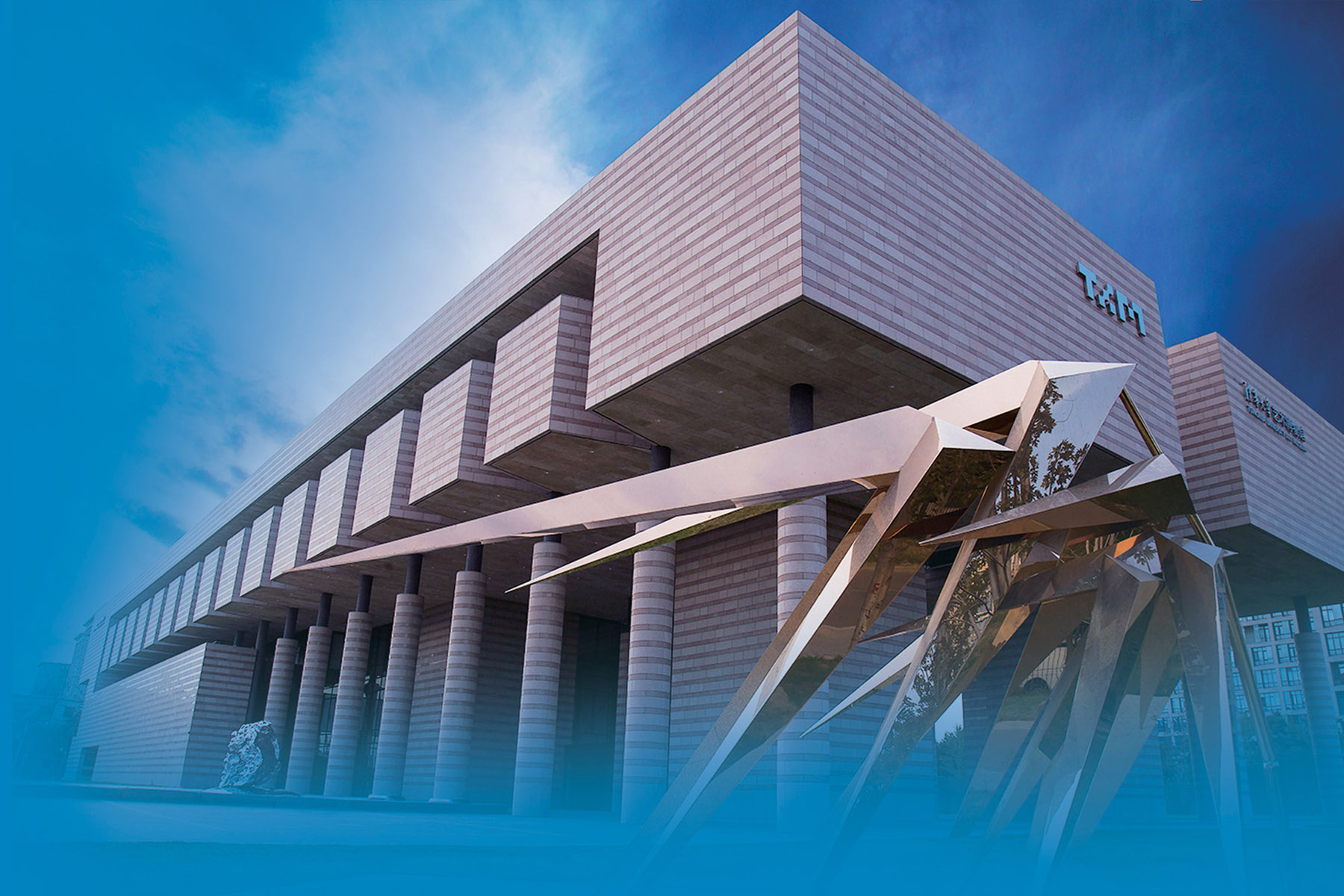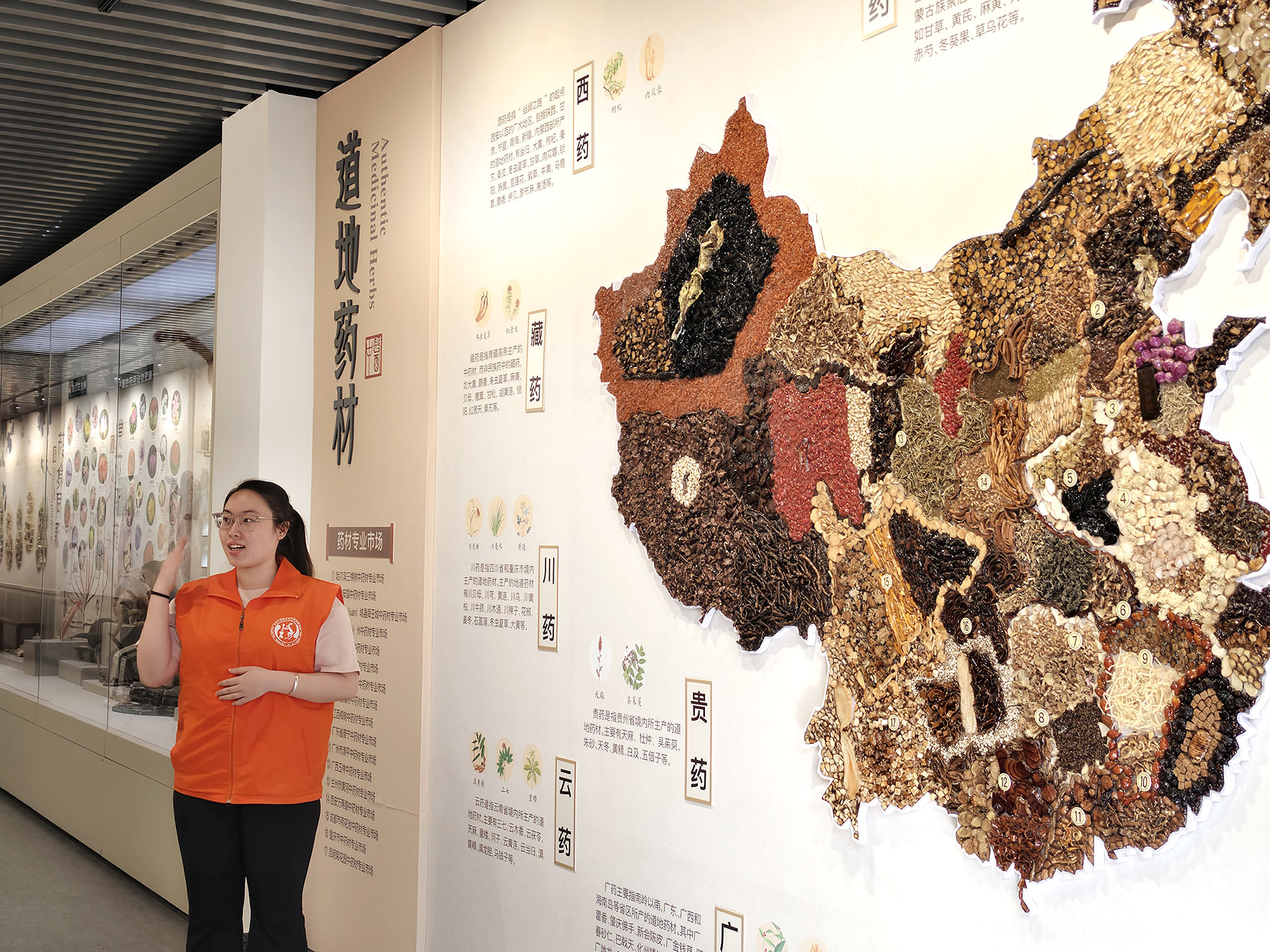From Chinese medicine to art, university museums connect students and the public through culture and creativity.

Lu Xinyu, a 26-year-old doctoral student in internal medicine at Beijing University of Chinese Medicine (BUCM), has long been an avid museum enthusiast.
"Whenever I visit a city, I always want to explore its museums," Lu said. So, when she discovered in 2016 that the university's museum volunteer association was recruiting, she immediately signed up to be a guide at the school's Museum of Chinese Medicine.
Although her role was to introduce knowledge to visitors, Lu found the nine-year experience rewarding in return. For her, the museum became a place not only for sharing traditional Chinese medicine with others, but also for deepening her own understanding and communication skills.
She recalled moments when guests would ask clinical questions — such as whether a baby's gender can be determined through pulse diagnosis, or whether eating KFC causes "internal heat" — a TCM concept referring to symptoms like sore throat and dry mouth.
"As a freshman at the time, I often didn't know how to respond," Lu admitted. "Those experiences motivated me to study classical TCM texts more thoroughly and to work on how I explained things. It really helped me build a stronger grasp of the subject and improve my interpretive skills."
READ MORE: Young artisans revive curative benefits of Chinese incense
Over the years, her approach evolved, but her passion for promoting TCM culture only grew deeper.
Lu said that visitors sometimes debate the value of TCM, questioning its scientific basis. In such moments, she shared stories of illnesses that TCM had helped treat when Western medicine could not, and explained how the system is rooted in centuries of accumulated wisdom, time-tested prescriptions, and a holistic approach to health.
"I hope I can encourage more people to take an interest in learning about TCM," she said.
Established in 1990, the Museum of Chinese Medicine now houses more than 2,850 herbal specimens and around 1,000 historical artifacts. It serves as a vital educational platform, helping both students and the public engage with the richness of TCM heritage.
For Qian Tongxin, a 21-year-old Chinese pharmacy major at BUCM and fellow museum volunteer, the exhibits bring TCM to life. One item that captivated her was Xinhui chenpi — dried tangerine peel from Xinhui, Guangdong province.
She was fascinated to learn that the peel's traditional production methods include aging it above simmering honeypots, and that some of the museum's collection had been buried during the Chinese People's War of Resistance Against Japanese Aggression (1931-45) to protect it from theft.
"I was shocked when I first learned its history. Even now, it still leaves a lasting impression on me," Qian said.
Beyond preserving artifacts, the university museum also enhances campus culture and serves as a creative platform for public engagement.
Qian is responsible for organizing annual events such as Museum Culture Week, which features activities like riddle games to deepen visitors' understanding of TCM and Chinese herbal film identification contests that challenge participants to recognize herbs shown in movies. She believes these efforts make traditional knowledge more accessible and engaging for younger audiences.

Innovative engagement
At Tsinghua University, a similar spirit thrives at the Tsinghua University Art Museum (TUAM), where the focus is on art, innovation, and the intersection of disciplines.
For Zha Jingyi, 29, a student at the Academy of Arts & Design and an intern at TUAM, the museum embodies the creativity and energy of Tsinghua students.
One of the most representative exhibitions, she said, is the annual display of final graduation projects — featuring everything from packaging and product design to mobile phones and headphones.
"It reflects our academy's tradition of focusing on practical applications in art and design," Zha explained. "Collectors and enterprises even visit the museum to explore collaboration or recruitment opportunities."
Zha also recalled a vibrant art event organized by TUAM to celebrate Tsinghua's anniversary, blending student-led performances of music, dance, and costume design.
"At first, I was just a spectator. But as the music shifted and the dancing became more passionate, I couldn't help but join in," she said. "Even though I'm not a professional dancer, I had a great time dancing along with the rhythms."
ALSO READ: Garden exhibition shows seeds of culture
According to Lu Xiaobo, director of TUAM, the museum plans to build a high-level collection system, advance academic research, and harness technologies like VR, AR, and AI to develop digital museums and virtual exhibitions — opening up new possibilities for artistic engagement.
"As one of China's leading comprehensive universities, Tsinghua aims to leverage its strengths in art and interdisciplinary studies to promote public art education and social engagement, shaping taste and leading cultural trends," he said.
He believes that although art is often seen as "useless", it plays an essential role in shaping values, exploring human emotions, and preserving cultural memory.
"While science uncovers the secrets of the natural world, art explores the depths of human feeling. Together, they are fundamental to human understanding and experience," Lu Xiaobo said.
Contact the writer at guojiatong@i21st.cn


